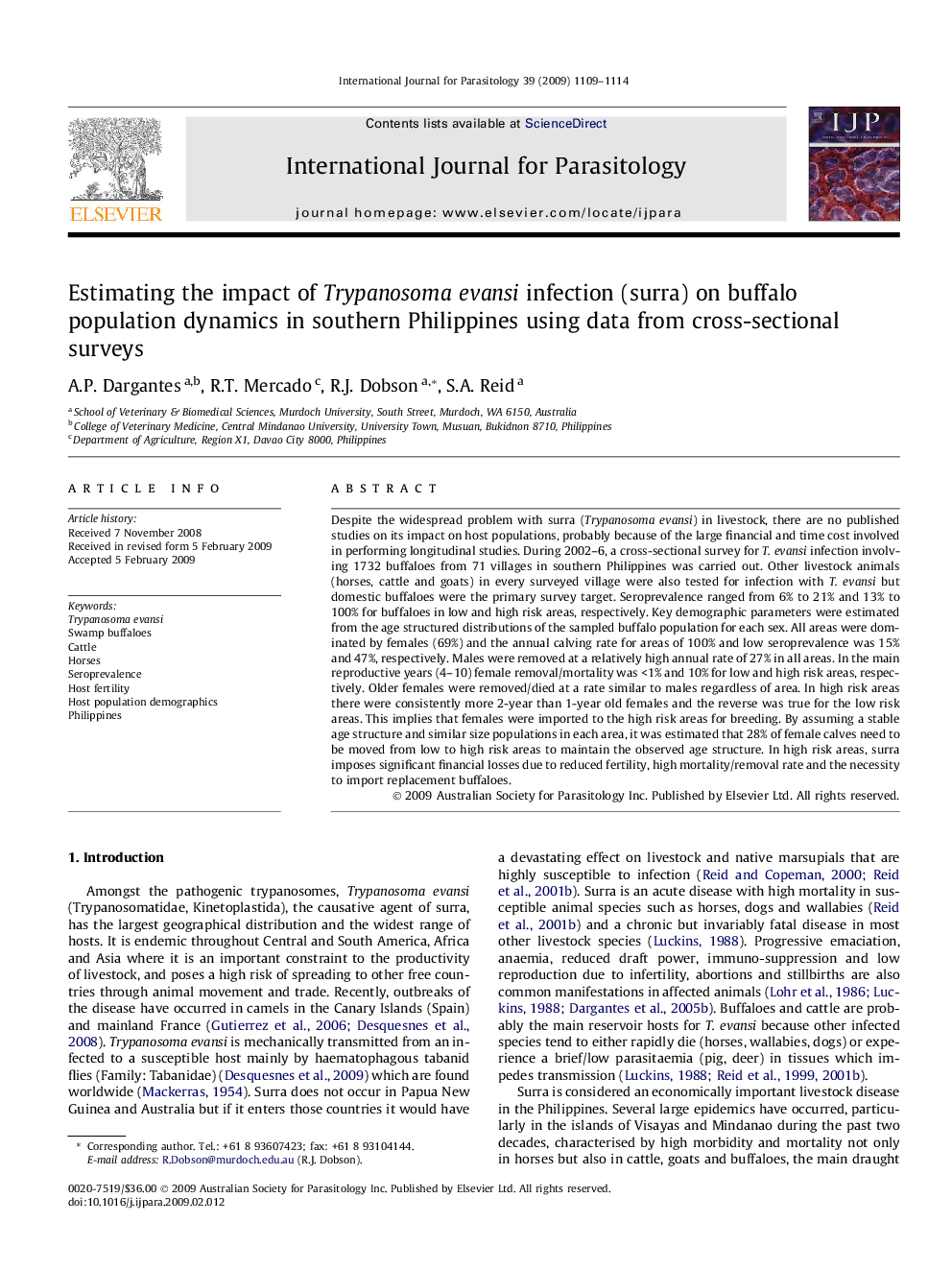| Article ID | Journal | Published Year | Pages | File Type |
|---|---|---|---|---|
| 10972910 | International Journal for Parasitology | 2009 | 6 Pages |
Abstract
Despite the widespread problem with surra (Trypanosoma evansi) in livestock, there are no published studies on its impact on host populations, probably because of the large financial and time cost involved in performing longitudinal studies. During 2002-6, a cross-sectional survey for T. evansi infection involving 1732 buffaloes from 71 villages in southern Philippines was carried out. Other livestock animals (horses, cattle and goats) in every surveyed village were also tested for infection with T. evansi but domestic buffaloes were the primary survey target. Seroprevalence ranged from 6% to 21% and 13% to 100% for buffaloes in low and high risk areas, respectively. Key demographic parameters were estimated from the age structured distributions of the sampled buffalo population for each sex. All areas were dominated by females (69%) and the annual calving rate for areas of 100% and low seroprevalence was 15% and 47%, respectively. Males were removed at a relatively high annual rate of 27% in all areas. In the main reproductive years (4-10) female removal/mortality was <1% and 10% for low and high risk areas, respectively. Older females were removed/died at a rate similar to males regardless of area. In high risk areas there were consistently more 2-year than 1-year old females and the reverse was true for the low risk areas. This implies that females were imported to the high risk areas for breeding. By assuming a stable age structure and similar size populations in each area, it was estimated that 28% of female calves need to be moved from low to high risk areas to maintain the observed age structure. In high risk areas, surra imposes significant financial losses due to reduced fertility, high mortality/removal rate and the necessity to import replacement buffaloes.
Related Topics
Life Sciences
Immunology and Microbiology
Parasitology
Authors
A.P. Dargantes, R.T. Mercado, R.J. Dobson, S.A. Reid,
